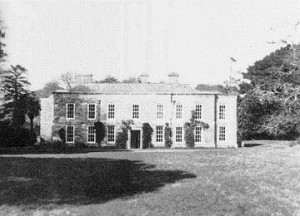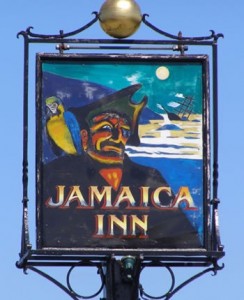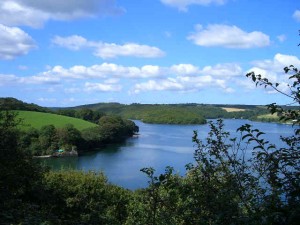You have no items in your cart. Want to get some nice things?
Go shoppingIf London’s smoggy skyline, bright lights and bustling pavements aren’t helping you put pen to paper, maybe it’s time to leave the capital for greener pastures. Follow in the footsteps of Britain’s literary greats for a spot of creative inspiration…

Seeing as it’s July and the weather forecast is looking promising, this week I’d recommend following Daphne Du Maurier down to the craggy cliffs of Cornwall. The writer famous for her haunting and romantic novels was notoriously secretive in real life, spending much of her time hiding away in the West Country.
Cornwall’s mysterious and myth ridden moors, secluded coves and changeable seas – the county’s Celtic landscape is present in much of her work. Du Maurier’s Frenchman’s Creek, Jamaica Inn and, most famously, Rebecca are as ingrained in Cornwall’s identity as pasties and fudge. Well, maybe not quite… but travelling around the coast of Cornwall, it is just as easy to stumble across the houses, towns and views which inspired Du Maurier to put pen to paper.

There are undeniably similar names: Menabilly, near Fowey on the south coast of Cornwall, is often considered to be the inspiration for Manderley, the gothic setting for Rebecca. Like the fictional Manderlay, Menabilly, though edging onto dramatic coastline, is hidden in trees and cannot be seen from the shore. The Elizabethan house in which Du Maurier and her family lived for twenty-six years is still private, but two cottages on the estate are rented out as holiday homes if you fancy a longer stay.
Fowey itself, a place beloved by Du Maurier, is definitely worth a visit. Though much more commercial than it was when Du Maurier first visited, it still has an inspirational air to it. The Annual Literary Festival held in the town each May sees many a Du Maurier enthusiast flock to the pretty seaside town in search of a glimpse of the novelist’s Cornwall.

Port Eliot, one of the oldest houses in Britain, also claims to have inspired Du Maurier’s Manderley. Set in acres of Grade 1 listed garden, the large estate fits the fictional description of an impressive mansion fit for entertaining and also boasts a meandering two mile long drive similar to the one which Du Maurier vividly describes in Rebecca. The house grounds are open to the public during June and July.
Port Eliot is also home to Cornwall’s biggest creative festival, dubbed the Glastonbury of the literary world. From the 21st – 24th of July, the estate fills with the best art, music, literature and creativity Cornwall has to offer

The Jamaica Inn, the haunted setting for Du Maurier’s novel of the same name, is one of Cornwall’s many must visit pubs. Sat on the Bodmin Moor, the legendary coaching house was once on the main road from London to Cornwall and, aside from its literary connections, is teeming with enough history and mystery (excuse the rhyming) to spark your creativity and maybe even inspire the beginning of a ghost story.

Filled with plenty of swashbuckling pirates, countless moonlit encounters and lashings of seventeenth century passion, another of Du Maurier’s famous novels, the romantic Frenchman’s Creek, is again set on Cornwall’s coastline. The Helford Estuary is the perfect place to while away a summer’s day following in the footsteps of Du Maurier and her fictional lovers. The still pace of life and rural surroundings provide the impression of a time warp which inspired Du Maurier’s historical romance. Take life slowly for the day and wander through the estuary’s overgrown pathways, lush greenery and dappled sunlight. The setting for Frenchman’s Creek is still the ideal location for an illicit encounter, fictional or otherwise…
Nearby St Ives is certainly worth seeing if you are still suffering from writer’s block. An artistic haven, the town’s cobbled streets are edged with art galleries, book shops and vintage stores. Du Maurier herself also frequented St Ives during the forties and stayed in a tiny white washed house in the middle of the town that can now be rented out for holiday stays.
Du Maurier once admitted that she could only really write in Cornwall which perhaps explains why she spent so much of her time there. The county has fuelled the creativity of writers and artists for generations, so if you are struggling for inspiration a trip around Cornwall should really do the trick. And even if it doesn’t and after all of this you still can’t string a sentence together, you can always just take advantage of all the good ale, wonderful food and sandy suntraps the county also has to offer.




